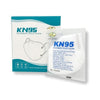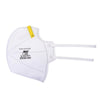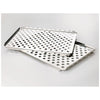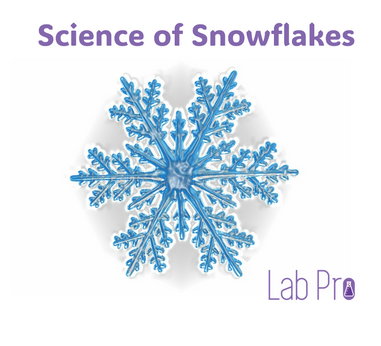- No products in the cart.
Science education is all about curiosity, discovery, and hands-on learning. In the laboratory, students get to explore the fascinating world of biology, chemistry, physics, and more. To make these experiments safe and effective, having the right lab supplies is crucial. In this comprehensive guide, we'll explore the must-have lab supplies for science classes and how they contribute to a hands-on and engaging learning experience.
Safety First: Protective Gear
Before diving into the world of experiments, safety should always come first. The following protective gear is essential for any science lab:
1. Safety Goggles: Protecting your eyes is paramount. Safety goggles shield students' eyes from chemical splashes, flames, and flying particles.
2. Lab Coats: Lab coats not only protect clothing but also provide an additional layer of safety. They should be worn to prevent chemical spills from coming into contact with skin or clothing.
3. Gloves: Disposable gloves are a must to prevent skin exposure to chemicals or biological materials. Nitrile gloves are a common choice due to their durability and resistance to chemicals.
Mixing and Measuring: Glassware
Accurate measurements are critical in science experiments. A set of quality glassware is indispensable:
4. Beakers: Beakers are essential for mixing, heating, and holding liquids. They come in various sizes, each with volume markings for precise measurements.
5. Test Tubes and Test Tube Racks: Test tubes are used for various purposes, from small-scale reactions to holding samples. A test tube rack keeps them organized and secure.
6. Graduated Cylinders: These cylinders are used for precise volume measurements, especially when dealing with liquids. They come in different sizes for different measurement needs.
7. Pipettes and Burettes: For accurate liquid transfer and titration experiments, pipettes and burettes are indispensable tools.
Heating and Stirring: Laboratory Equipment
Many experiments require controlled heating and stirring. The following equipment aids in these processes:
8. Bunsen Burner: A Bunsen burner provides an open flame for heating and sterilizing equipment. It's a fundamental tool in chemistry labs.
9. Hot Plates and Magnetic Stirrers: Hot plates can be used for controlled heating, while magnetic stirrers offer a hands-free way to mix solutions.
10. Crucibles and Tongs: Crucibles are used for heating substances at high temperatures, and tongs allow for safe handling of hot objects.
Observation and Analysis: Microscopes and Lab Instruments
Scientific observation and analysis often require specialized instruments:
11. Microscopes: Microscopes enable students to observe tiny structures and microorganisms, fostering a deeper understanding of biology and microbiology.
12. Thermometers: Precise temperature measurement is essential in many experiments, making thermometers a staple in every science lab.
13. pH Meters: For chemistry experiments involving acidity and alkalinity, pH meters provide accurate readings.
14. Spectrophotometers: These instruments measure the absorbance or transmission of light, crucial in chemistry and biology experiments.
Safety and Cleanup: Miscellaneous Supplies
Maintaining a clean and safe laboratory environment is essential:
15. Fire Extinguishers: In case of emergencies, fire extinguishers should be readily accessible.
16. First Aid Kit: A well-stocked first aid kit is essential for addressing minor injuries quickly.
17. Chemical Spill Kits: These kits contain materials for safely handling and cleaning up chemical spills.
18. Waste Disposal Containers: Proper disposal of hazardous materials is essential. Different containers are used for different types of waste, including sharps containers for used needles.
Laboratory Manuals and Supplies Organization
Beyond the physical equipment, it's essential to have well-structured lab manuals and proper organization:
19. Laboratory Manuals: Comprehensive lab manuals guide students through experiments, ensuring they follow procedures correctly.
20. Lab Notebooks: Encourage students to keep detailed lab notebooks to record observations, procedures, and results.
21. Labeling Supplies: Keep a supply of labels, markers, and tape for proper sample identification.
Creating an Engaging Learning Environment
Having the right lab supplies not only ensures safety but also contributes significantly to an engaging learning experience. Here's how:
1. Hands-On Learning: Practical experiments help students grasp complex scientific concepts and develop problem-solving skills.
2. Real-World Application: Lab work bridges the gap between theory and practice, showing students how scientific principles are applied in the real world.
3. Critical Thinking: Analyzing data and drawing conclusions from experiments fosters critical thinking and scientific inquiry.
4. Safety Awareness: Working with lab supplies teaches students the importance of safety protocols and adherence to guidelines.
5. Collaboration: Group experiments encourage teamwork, communication, and collaboration among students.
In conclusion, the right lab supplies are the backbone of a successful science class. They provide the tools for students to explore, experiment, and discover the wonders of science. When combined with well-structured lab manuals and safety measures, these supplies create an engaging and educational environment where scientific curiosity knows no bounds. So, whether you're a student, teacher, or lab manager, ensure you have these essential lab supplies on hand for a safe and enriching science education experience.
For over 40 years, Lab Pro Inc. is your steadfast source for premium lab supplies, hand tools, lab equipment, chemicals, and PPE apparel. Trusted by aerospace industries, medical device companies, and laboratories globally, we epitomize exceptional quality in every product. Experience the convenience of next day service in California. Contact us online or at 888-452-2776 to explore solutions tailor-made for the laboratory industry. Elevate your experiments with Lab Pro Inc. – your partner in precision and excellence.












































